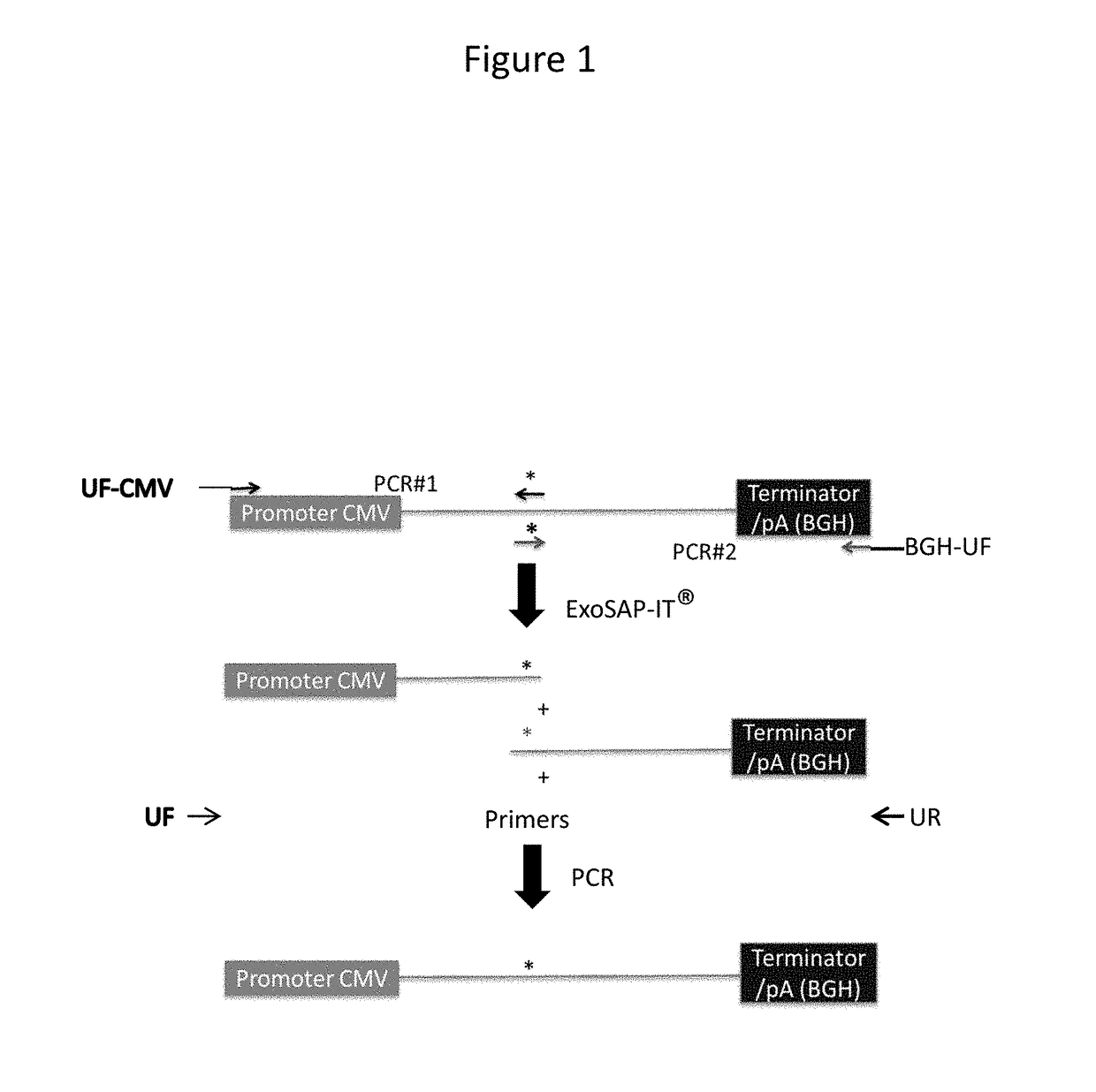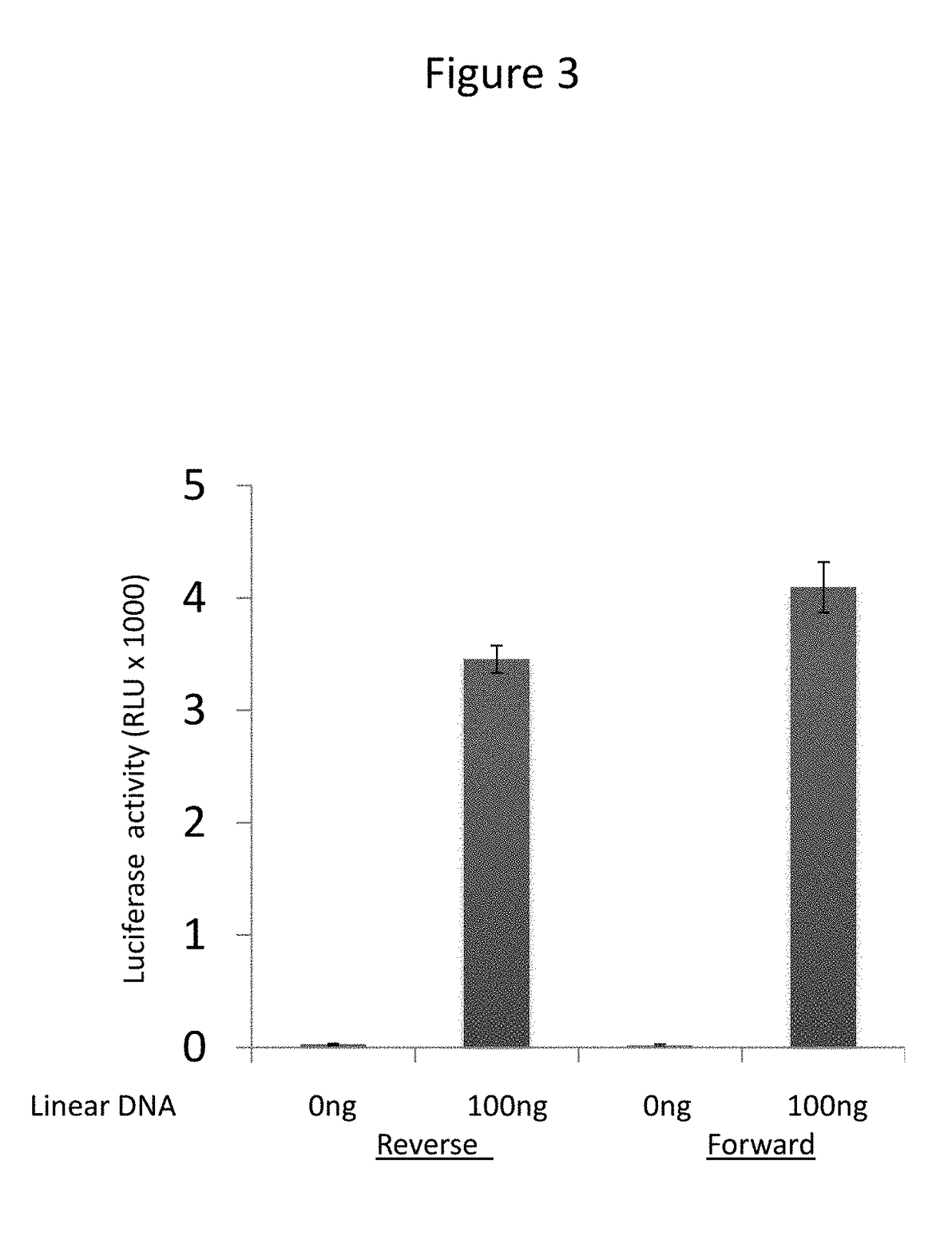Novel Cell Based Assay
a cell-based assay and cell technology, applied in the field of cell-based assays, can solve the problem that the technology does not provide any functional information of the identified mutations, and achieve the effect of improving the accuracy and reproducibility of the results
- Summary
- Abstract
- Description
- Claims
- Application Information
AI Technical Summary
Benefits of technology
Problems solved by technology
Method used
Image
Examples
example 1
Next-Generation Sequencing to Interrogate Mutation of Tumor
[0128]Genetic change, mutation of genes, is one of the mechanisms to acquire resistance in breast cancer during hormonal therapy. To survey the mutation status of estrogen receptor (ESR1) and aromatase (CYP19A1) genes, whole-exome sequencing of the tumor was performed. Cancer tissue was isolated from formalin fixed paraffin embedded (FFPE) blocks of tumor. Genomic DNA was extracted and was used to prepare a library for next-generation sequencing. The identified mutations, which caused change in amino acid sequence, were picked to examine its functional effect on the genes in our proprietary cell-based assay described below. The patient gene carrying the identified mutation is constructed using PCR mediated overlapping extension in a format of linear expression cassette.
example 2
Construction of Linear Expression Cassette of Human Estrogen Receptor (ESR1)
[0129]In order to study the effect of unknown mutations in human ESR1 gene, we decided to generate linear expression cassette, which contained CMV promoter controlling expression of ESR1 coding sequence followed by terminator and polyadenylation signal. To do so, overlapping extension PCR was employed to construct the linear expression cassette using expression plasmid of human ESR1 as PCR template. Using this method, the construction of linear expression cassette takes around 4-8 hours. However, the traditional cloning method to generate expression plasmid takes around 2-4 days. Therefore, making patient gene in linear expression cassette format is highly advantageous for a clinical diagnostic test because of its quick turn-around time.
a) Construction of Expression Plasmid of Human ESR1
[0130]cDNA plasmid encoding human ESR1 gene was purchased (Dharmacon). We amplified the coding sequence of human ESR1 gene ...
example 3
Identification of Transfection Method
[0133]HEK 293 cells are a specific cell line originally derived from human embryonic kidney cells grown in tissue culture. HEK 293 cells have been widely used in cell biology research for many years, because of their reliable growth and propensity for transfection. In general, there are two major types of transfection, forward and reverse.
[0134]The most routinely employed transfection protocol where cells were seeded a day prior to transfection was referred to as “forward transfection”. Forward transfection methods worked well for most adherent cell types that were seeded a day prior to transfection in order to achieve an actively dividing cell population at the time of transfection. A “reverse transfection” protocol where freshly passaged cells were added to transfection complexes is ideal as it reduced hands-on time for the end user. In this scenario, cells were not adhered to the plate surface by the time they interacted with the transfection ...
PUM
| Property | Measurement | Unit |
|---|---|---|
| culture time | aaaaa | aaaaa |
| culture time | aaaaa | aaaaa |
| resistance | aaaaa | aaaaa |
Abstract
Description
Claims
Application Information
 Login to View More
Login to View More - Generate Ideas
- Intellectual Property
- Life Sciences
- Materials
- Tech Scout
- Unparalleled Data Quality
- Higher Quality Content
- 60% Fewer Hallucinations
Browse by: Latest US Patents, China's latest patents, Technical Efficacy Thesaurus, Application Domain, Technology Topic, Popular Technical Reports.
© 2025 PatSnap. All rights reserved.Legal|Privacy policy|Modern Slavery Act Transparency Statement|Sitemap|About US| Contact US: help@patsnap.com



